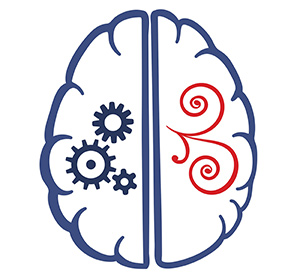Hypnosis: What Is It And How Does It Work?
The many benefits of hypnosis and how to harness them
 Hypnosis is commonly used for birth preparation
Hypnosis is commonly used for birth preparation"It is really amazing what people can do. Only they don't know what they can do."
- Dr Milton Erickson
Hypnosis. Trance. Mesmerism. Few people understand what hypnotic trance really means or how it works. But you can be one of the few!
To experience hypnosis you certainly don't have to understand it - just as flowers don't need to know the inner workings of photosynthesis in order to grow.
But once you come to know how trance works and the role it plays in producing emotional problems (which is why we also use it to help overcome them), you will start to understand yourself and other people so much better.
Hypnosis happens whether you understand it or not. Believe it or not, you were in deep trance even before you were born. You probably entered a trance today. And so did your dog!
Hypnosis is both natural and powerful
All mammals often enter a kind of trance in which they become more open to a certain kind of learning - which may help or hinder them. When a dog or cat locks their attention and produces instinctive responses to a given trigger, they are experiencing a form of trance.1 That might not make much sense now, but by the end of the article you'll see what I mean.
My point is that hypnosis happens naturally. It's so much more than a controversial stage trick or a complementary therapy. Without understanding the central role that trance plays in human life, we can barely understand ourselves or other people at all.
What's more, we can use this amazing natural force to make incredible changes within ourselves. When we harness hypnosis it can take us to some wonderful places, like a strong gust of wind for a sailboat.
Hypnosis used well can help us heal faster,2 leave depression behind,3 and overcome physical afflictions4 as well as emotional problems such as addictions.5,6 It can lessen physical pain,7 improve performance in sports,8 and even strengthen our muscles9 - all from our armchair!
So hypnosis is clearly amazing! But what exactly is it?
The mystery at your fingertips
Hypnosis isn't just a psychological experience and nor is it just a physical experience. It's both.
Every day, or, I should say, every night, you travel into the deepest of hypnotic trances. A trance in which your surroundings, even your everyday world, is forgotten. A state of mind in which you can do anything, from flying through the air on a magic carpet to communicating with phantasmagorical creatures.
I'm talking about dreams, of course.
We all spend at least 25% of our sleep time dreaming, whether we recall those dreams later on or not. Time spent dreaming is known as the REM (rapid eye movement) stage of sleep. We also call this stage 'paradoxical sleep', because your physiology and psychology are markedly different than in your non-dream sleep.
During REM sleep our attention is locked inward, onto the self-created realities of our deepest imagination.
And that's what hypnosis is all about.
How hypnosis works: The dream/REM connection
The deepest trance state you experience is when you are dreaming. You are completely immersed in a self-created imaginary reality with little or no awareness that it is not 'for real' - not unlike the deeply hypnotized stage subject.
Even though the word hypnosis comes from the Greek hypnos - the god of sleep - when we enter hypnosis, we are entering the REM state while awake. That's essentially what hypnosis is - accessing REM when not asleep.
Dreaming is an amazing demonstration of your brain's ability to simulate reality and a clear indicator of why hypnosis works. It is fairly common for a hypnotized subject to vividly experience an imagined reality - less so than in dreaming perhaps, but still in a state of complete absorption.
The rapid eye movement (REM) of dreaming is also often observed during hypnosis. This is the idea behind the traditional method of swinging of a watch in front of the subject's eyes to induce hypnosis - it causes side-to-side movement of the eyeballs, similar to REM.
Since dreaming is largely concerned with 'clearing' the brain of emotional arousal, it isn't hard to see how hypnosis can be good for helping people with emotional problems.
But there are still more similarities between induced hypnosis and the dream state.
How the 'hypnotized person as plank' trick works
 Catalepsy is a natural part of hypnosis
Catalepsy is a natural part of hypnosisA famous stage trick is to lie a hypnotized subject between two chairs and stand on their stomach. (Don't try this at home, by the way, it's really bad for your back!)
This is the sort of demonstration that has led to the idea that hypnosis is something strange. However, when we consider the link to the dream state, the reason this is possible becomes much clearer.
When you're dreaming, your ability to move is inhibited for obvious reasons - acting out your dreams would be highly dangerous for you (and especially for your sleeping partner!). If you are dreaming of being Superman on a summer's night on a room with an open window, you seriously do not want to actually try to fly! Although in the dream, your imagination makes it feel incredibly real.
This phenomenon of inhibited major muscle movement, known as 'catalepsy', also occurs during hypnosis. So already we can see close parallels between dream sleep and hypnosis:
- Narrowed attention
- Activation of inner focus and the imagination
- Stillness of the major muscles (catalepsy)
- Side-to-side movement of the eyeballs (sometimes, but not always, observed during hypnotic trance).
Use what nature has given you!
When we hypnotize a subject, we can often use these natural features of the REM state to help them.
For example, we can suggest catalepsy during hypnosis, where parts of the body can become immobile or self supported for long periods without discomfort. In some subjects, catalepsy can be easily produced hypnotically and then used for pain control or even hypnotic anaesthesia, whereby even major operations can be performed with only hypnosis as the anesthetic.10
Really, hypnotic trance is a continuum. We can be really deeply hypnotized, or we can be in such a mild everyday trance that we wouldn't dream (no pun intended!) of calling it hypnotic. But for the skilled hypnotherapist, any level of trance can be harnessed to produce positive outcomes for the trance subject.
So what do I mean by 'everyday' trance?
Everyday trances
Have you ever 'zoned out' while driving? Your unconscious competence enables you to drive safely even while another part of your mind daydreams. You might arrive at your destination with barely any conscious memory of the journey you just took!
What about becoming deeply engrossed in a movie or a book? Two hours can fly by without you noticing. Try doing the same thing standing in the rain waiting for a bus! Your brain is clearly operating differently with respect to memory and time in these two situations.
As I'll explain in a moment, any strong emotion has hypnotic features, and we can't deeply learn - the sort of learning that changes emotional response and therefore behaviour - without a hypnotic focus gluing that learning in place.
During hypnotic trance we all become more suggestible, which sounds a bit like we turn into automatons to be programmed by the hypnotist, but that's not how it works.
When we're in trance we're more able to assess ideas for their merits and how they 'fit' with us, without the knee-jerk reactions of consciousness 'protecting' us from being changed by outside ideas. The calmness that comes with therapeutic hypnosis means new ways of approaching things can be appreciated and potentially integrated.
You've never dreamed more than you did in the womb
 Third-trimester babies dream more than anyone!
Third-trimester babies dream more than anyone!The most REM you ever experienced happened not during dream sleep, but before you were even born - during the last three months of your gestation in the womb.11 It seems that it's through this pre-birth REM that many of our 'hardwired' instincts are laid down, such as the 'startle response' to loud noises, fear of heights, and other survival instincts.
So the REM state, it appears, isn't just the state through which we dream at night but also the state in which we are programmed instinctively and emotionally.
This is why, when trying to change beliefs or thoughts consciously just doesn't seem to work so well, clinicians turn to hypnosis to help people overcome deeply programmed emotional problems.
Because, make no mistake, naturally occuring trance states can cause emotional problems - and this is vital to understand.
Negative self-hypnosis and emotional problems
We are only able to go into hypnosis because trance is part of our natural makeup as human beings. Without the ability to focus our attention narrowly, we wouldn't be able to concentrate, learn, remember, or form memories. Our potential for achievement would be very limited indeed.
But this ability to focus also gets us into trouble. When we narrow our focus and direct it inwards, we enter a kind of trance. Depressed people tend to spend a lot of time focusing inward. The more they worry (an inward focus characterized by the use of imagination), or 'ruminate', the more depressed they become.12 Clearly this kind of trance does not help, especially if it is prolonged.
People who develop phobias become deeply transfixed - we might say entranced - by whatever it is that they are phobic of. It's as though no other parts of reality exist for them in the moment of their phobic response.
In fact, any strong emotion has a hypnotic effect on us.
Fear, anger, lust, love, and addiction - all leave us open to trance
 Intense focus created by emotion is a trance state
Intense focus created by emotion is a trance stateAddicted people find it hard to break out of the trance of addiction, and may fail to think about or widen their focus.
People who develop post-traumatic stress disorder (PTSD) experience spontaneous hypnotic regression back to an original trauma whenever some element in the environment acts as a kind of hypnotic cue for them to instantly change their state. Research has found a possible link between risk of long-lasting PTSD and natural hypnotizability.13
Likewise, a chronically jealous person will be led around by their own uncontrolled imaginings, which to them feel real. And someone suffering obsessive-compulsive disorder (OCD) can lose track of time and forget everything other than their obsessions and compulsions.
We can see that these conditions are not just about faulty thinking or 'cognitive errors' so much as naturally occuring hypnotic trance working against the person.
When we are very angry, we focus down on really narrow parts of reality and miss a wider view. What's more, we can find we instantly become angry just at the mention of the name of a person who made us angry - when this happens, their name is triggering what we call a 'post-hypnotic response'.
Using good trances to undo bad trances
 Hypnosis is used for more than just solving problems
Hypnosis is used for more than just solving problemsWe use hypnosis to help people with emotional conditions because these conditions have core hypnotic aspects to them.
But when I first started using therapeutic hypnosis to help others what amazed me most was how many physical problems I could help people with, from high blood pressure14 to chronic and acute pain, such as that of clients undergoing cancer treatment.15 Hypnosis can even be used to improve the immune response.16
But we don't just use hypnosis to overcome difficulties. I've worked with world-famous musicians, sportspeople, and artists to maximize their creative performance using hypnosis.
Hypnosis can help you be the best you can be.
Using hypnosis for success and happiness
Yes, we use hypnosis to help people overcome emotional difficulties. But we can also use it to help ourselves perform exceptionally, taking us closer to all kinds of success. We can use it to not just survive, but to thrive like never before.
We can first use it to help clear away the blockages to success, like excessive fear, self-doubt, self-consciousness, and shyness or emotional insecurity.
Then we can use it to help ourselves more often enter the optimal state of performance, sometimes called the state of flow or 'being in the zone'. During hypnosis it can be suggested that we engage in behaviors that will:
- better meet our emotional needs,
- take us toward our desired goals, and
- help us more often experience the mind/body states that occur during successful activity.
Hypnosis isn't the same as relaxation, but we use relaxation as a comfortable medium through which to apply hypnosis.
During hypnosis we can rehearse new ways of feeling and behaving so that we have a kind of emotional blueprint for how to act and feel in ways that help us the most. Hypnosis can also be used to help people feel different physically, to access happier and healthier states.
Because hypnosis isn't just all in the mind or all in the body.
Hypnosis spans the psychological and the physical
Take sexual problems. They may be primarily a physical problem - or it may be that the person's psychology is influencing their physical response. More than likely it is a combination of both. Hypnosis tends to work by influencing the mind/body system rather than simply mind or body.
This is why the use of hypnosis has been shown to be effective in the treatment of psycho-physical problems such as irritable bowel syndrome.17
But if you think about it, even if you simply use hypnosis to feel more confident, the effects will be felt physically as well as mentally. And I really believe that understanding how hypnosis locks attention can help us know ourselves better.
People who regularly use hypnosis can reap all kinds of benefits. But if you're new to healing or performance hypnosis, you might be wondering...
What does it feel like to be in a trance?
When people first experience purposefully induced hypnosis it sometimes feels different from what they expected. They may have assumed they would be totally unconscious, but in reality the conscious mind is still available to them. Rather, they have a parallel awareness.
It's a common misconception that trance is a state of unconsciousness like deep sleep.
Often people who have been formally hypnotized report feeling wonderful afterwards, or amazed by what they could experience. It feels natural and pleasant, especially if the person who facilitated their hypnotic session is really skilled.
Getting to know different parts of you
 Hypnosis gives you access to different parts of your mind
Hypnosis gives you access to different parts of your mindIn hypnosis you can be aware of your thoughts and surroundings and still be hypnotized. However, you may still be pleasantly surprised by an unconscious response, such as a 'hand levitation' or a pleasant memory springing to mind.
This is similar to the way in which we might be 'surprised' by a giggling fit or by pushing our foot down on an imaginary brake pedal when we are in the passenger seat and someone else is driving!
The conscious part of you simply observes the manifestations from your unconscious mind.
The conscious and unconscious minds are always working, even though we might not always be aware of how to properly harness the powerful forces of the unconscious mind.
When you start to see how hypnosis operates in your own life then start to use it in a directed fashion, you will begin to notice the benefits. From overcoming fears and old 'learned limitations' to controlling pain and creating more energy, hypnosis is a way to really thrive, develop, and enjoy your life.
Want to know more? Learn hypnosis with our free online course.
References
- The process that causes this type of response is known as 'classical conditioning'; see https://en.wikipedia.org/wiki/Classical_conditioning.
- https://www.tandfonline.com/doi/abs/10.1080/00029157.2003.10403546
- https://www.tandfonline.com/doi/abs/10.1080/00207140601177897
- https://www.sciencedirect.com/science/article/pii/S0016508502004821
- https://www.tandfonline.com/doi/abs/10.1080/00029157.1993.10403054
- https://www.tandfonline.com/doi/abs/10.1080/00029157.2004.10401472
- https://www.tandfonline.com/doi/abs/10.1080/00207140008410045
- https://journals.sagepub.com/doi/abs/10.2466/pms.2000.91.3f.1057
- https://westallen.typepad.com/brains_on_purpose/files/mind_over_matter_shackell_07.pdf
- https://jamanetwork.com/journals/jama/article-abstract/319327
- https://www.sciencedaily.com/releases/2009/04/090413185734.htm
- https://www.bbc.co.uk/news/magazine-24444431
- https://www.ncbi.nlm.nih.gov/pubmed/18569143
- https://www.tandfonline.com/doi/abs/10.1080/00029157.1973.10403656
- https://www.jahonline.org/article/S0197-0070(83)80024-2/abstract
- https://www.tandfonline.com/doi/abs/10.1080/00029157.1995.10403185
- https://link.springer.com/article/10.1023/A:1020545017390






